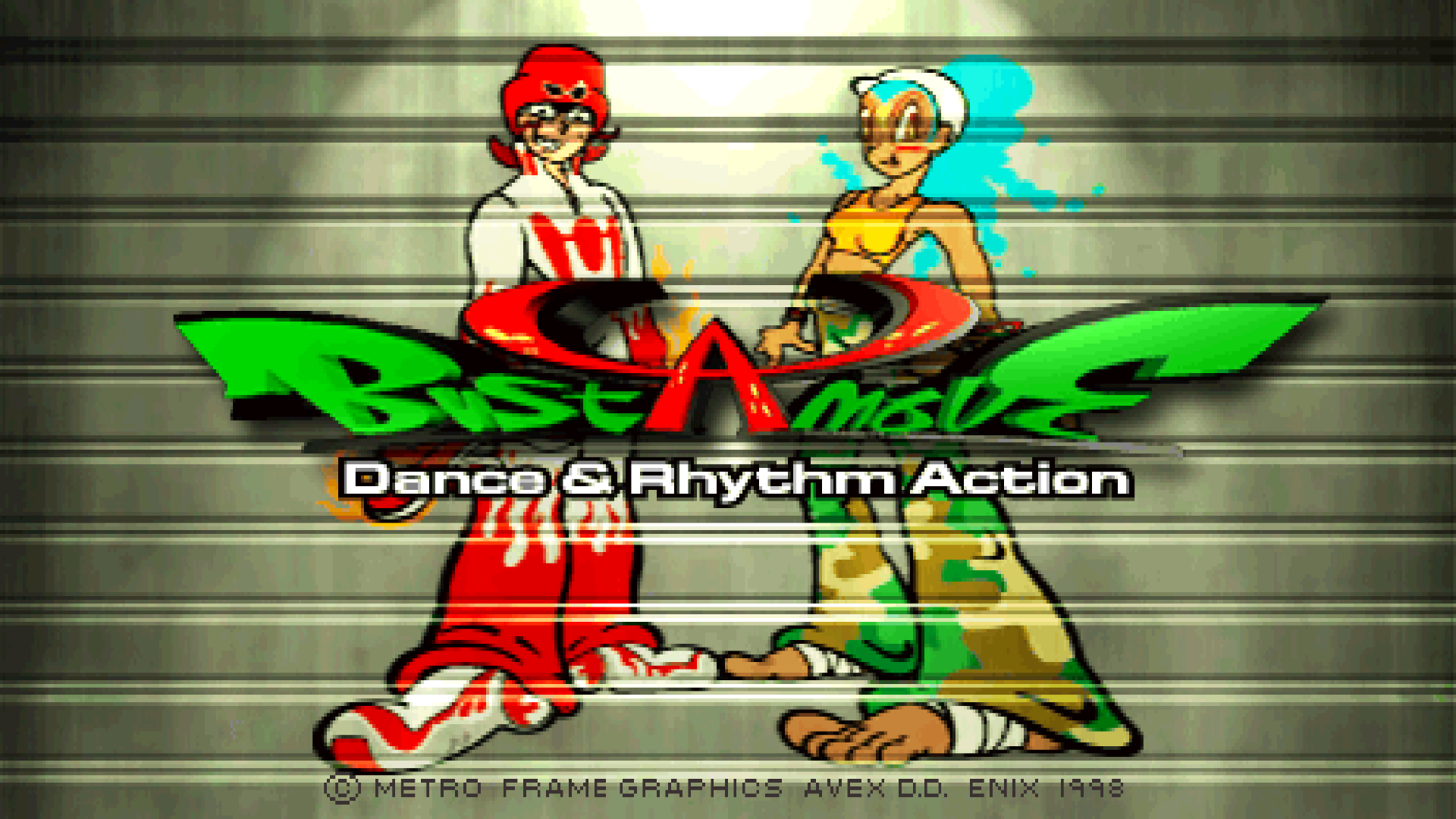Bust A Groove (Bust A Move)
Last week during Steam Next Fest I looked at God of Rock, intrigued by its blend of rhythm and fighting games. While I mentioned that the two genres went hand-in-hand since the arcade era, very few games captured this than the Bust A Move series. No, not that Bust A Move, with the cute miniature dinosaurs spitting bubbles at other bubbles. I’m talking about Bust A Groove, arguably one of the pioneers of competitive rhythm-fighting games on a console.
In the west, Bust A Groove was the name players would become familiar with as Bust A Move was licensed in the US as the localized name for Puzzle Bobble. Looking back at it now, I never understood why it took Taito this long to embrace the Puzzle Bobble name, but if there was a chance for the series to see a remaster, I’d imagine it’d reclaim the Bust A Move name. As such, I’ll be referring to the games by their differing titles in reference to their versions. The Japanese version will be Bust A Move when it needs to be referenced.
Bust A Groove was released in 1998 and developed by Metro Corporation, a small development studio that’s still active to this day. Their latest work was assisting with the animations for Pokemon Scarlet and Violet according to its website. Bust A Groove may not have been their first game, but it would become one of their most well-known titles thanks to an impressive marketing campaign in both Japan and America.

There was a music company that was licensed to provide the title’s original songs. That company would be Avex Trax, one of Japan’s biggest brands in the music industry. To put things in perspective, imagine if Def Jam licensed their music to a fighting-wrestling game. Avex was to Bust A Groove as Def Jam would be for Def Jam Vendetta a few years later. At the time, Avex was a smaller brand, utilizing artists more popular in the Japanese underground scene to record the songs. This allowed Bust A Groove and its sequel to capture its authentic “90s dance music” sound, however, Bust A Move’s soundtrack is different from Bust A Groove's.
There are several key differences between both versions, although both titles can be enjoyed without a language barrier. References to drugs, tobacco, and alcohol were removed, including Hiro’s cigarette and Strike’s flask that he drinks from before each fight. Many of its suggestive lyrics have been altered, including an infamous refrain in one character’s song that includes ‘colorful’ language. Aside from that, songs that were in Japanese had an English version, which keeps the same tone as their original counterparts.

The Japanese version of Kitty-N’s “Blue Knife,” Aozora no Knife, sung by Hatsumi Morinaga, is one of my favorite songs in the series for example. One piece of trivia that has recently resurfaced a few years ago was the rumor that Crystal Kay, a popular Japanese pop singer, was the vocals for the song “Shorty and the EZ Mouse.” While nothing has ever been hard confirmed, she did mention it several times on her IG Live (thanks Otaquest) which means there are many more people who were involved with the series’ production than what is shown at face value.
With its deep roots in underground Japanese dance music and its colorful art design done by Hideyuki Tanaka or FrameGraphics, Bust A Groove was already a unique title that stood out from the rest. The gameplay was the final piece to the puzzle and it did not disappoint. In its presentation, it appeared similar to most fighting games. Players can choose from one of ten characters, each having the power of the “dance energy groove-tron.” The objective is to outdance everyone who has this power so they can become the number one dancer in the universe. Look, this was taken straight from the game manual, I didn’t make this story up.
However, each character has a reason for entering the tournament, much like fighters have a reason to enter tournaments in fighting games. It’s best to think of Bust A Groove as a fighting game first, where plots are second fiddle to the actual gameplay. Dancing in Bust A Groove relies on two factors, the directional inputs on the left of the face button input on the right. On every fourth beat, the face input button will flash, prompting the player to press the button on the beat. However, in order for the dance command to count, the player will need to input all the directional buttons to the left of the trigger before the fourth beat.

For example, if the command reads (left, right, right, up, Circle), then the player has up to three beats to input “left, right, right, up” but they must press “Circle” on the fourth beat afterward. Failure to do so will cause the player to miss and will set them back. Inputting one command will lead to another on every fourth beat until their combo ends with a finisher, giving them the most points.
What’s cool about this system is that there are multiple branching paths, with the top path leading to easier commands and the bottom path leading to the most difficult yet rewarding commands. There’s no benefit in going for any other path except for the bottom unless the player wishes to engage in a “custom choreography” of course. However, when playing for keeps, the bottom route is the way to go. Every song has a hook where the player does their solo routine uninterrupted.
The same rules apply here, except each character has a “hidden combo” that’s not shown anywhere on the screen. If the player inputs a character-specific command and finishes the hidden combo, they will earn bonus points, followed by the announcer declaring it a “high-scoring move.” In harder difficulties, a combination of “bottom route commands” and “hidden combos” is necessary to win at the later stages. Here’s the entire roster of Bust A Groove, including the hidden characters highlighted in bold. Names that are italicized are “alternate versions” of existing characters.
- Heat
- Kelly
- Strike
- Hiro
- Shorty
- Kitty-N
- Frida
- Pinky
- Hamm
- Gas-O
- Robo-Z
- Capoeira
- Burger Dog (Based on Hamm)
- Columbo (Shorty’s Pet)

Unlike most fighting games, the only major difference among each character is their dance styles and the commands for their hidden combos. Heat and Frida for example share the same hidden combo, Up, Down, Up, Cross (X). This makes it so players who are familiar with one character can easily play similar characters without needing to remember every specific command. Each character can also attack their opponent twice per song. The attacker sacrifices a beat with the intention of stunning their opponent for twice as long.
This is best used in a pinch if the player is falling behind, but the defender can evade the attack by pressing R2 in replace of a face button on the fourth beat of the attack. If the defender is skilled enough, they can counter the attack, reversing it back to the attacker who can then either evade or reverse the attack right back. Theoretically, the two dancers can reverse the attacks indefinitely but the timing window to reverse an attack is far tighter than simply evading it.

Bust A Groove’s success was huge enough to give it several sequels, with Bust A Groove 2 released in 1999 a year after the original. Despite its over-the-top slapstick comedy, Bust A Groove had a unique combat system rooted in fighting games but based on its rhythm game foundation. Each character had a sense of personality shown in their animations as well as their dance moves. Heat, from the way he dresses to his breakdance moves, is the poster boy for b-boys in rhythm games.
Strike on the other hand is a convict whose appearance and dance moves resemble the early 90s New Jack Swing and West Coast Hip-Hop era. Hiro, of course, is entirely based on Saturday Night Fever, Shorty represents the Japanese teenager of the 90s, and so on. The sequel would improve upon almost everything the first game laid down as groundwork. Every great game that’s part of a series has a beginning, and Bust A Groove was an incredible first impression of what would become a huge part of my childhood.
UPDATE (4/30/2023): It turns out there's more to discovering an artist outside of "Shorty And The EZ Mouse" trivia as there are fans who have been slowly discovering more information about the artists who have worked on these games. This was a time when many underground artists were making their big break, usually overseas in Japan. Most of these artists, as I've mentioned with Aaron G West's "The Heat Is On," are still active to this day, and giving those who have worked on rhythm games their roses is always a cool thing to see.
I've received an email from a reader who has spent the greater portion of the past few years uncovering the artists who have worked on the original Bust A Move, detailing a short biography of the artist as well as their samples. Hopefully, in the future, I can interview someone on here who has been in the industry during this time and this era. A special thanks to The Name Of Your Voice for the tip! You can check out their video below as well as a link to their Bust A Groove blog here.

